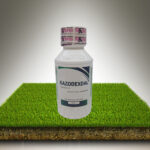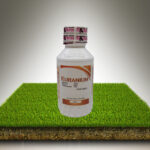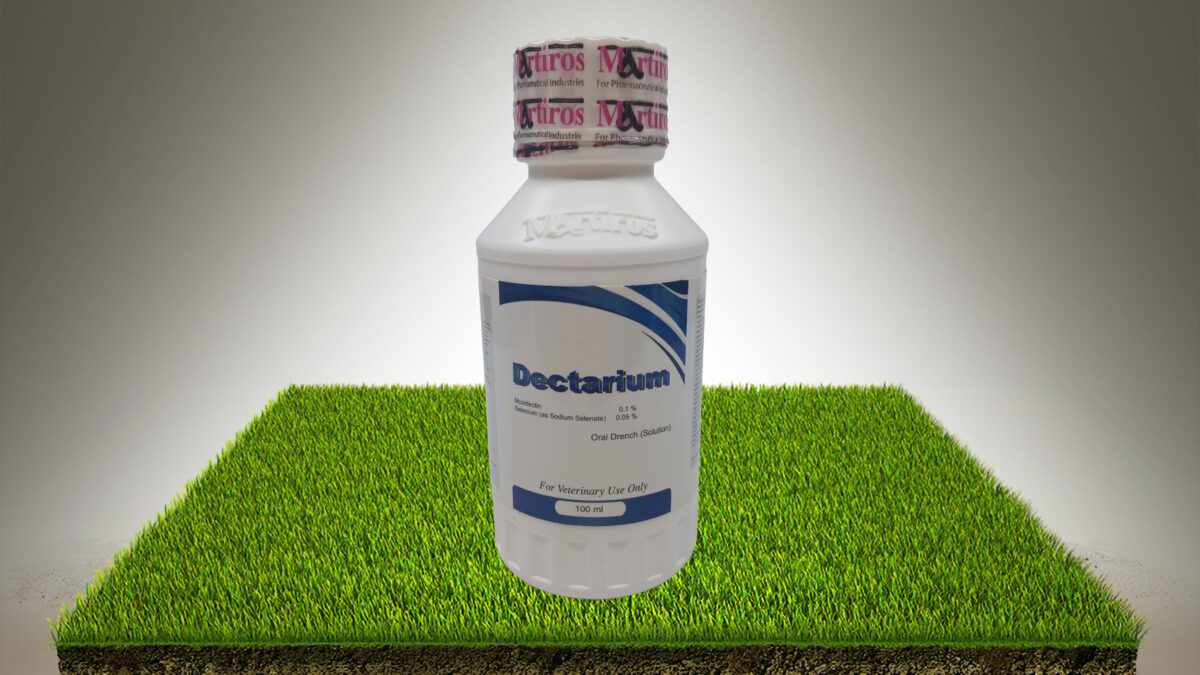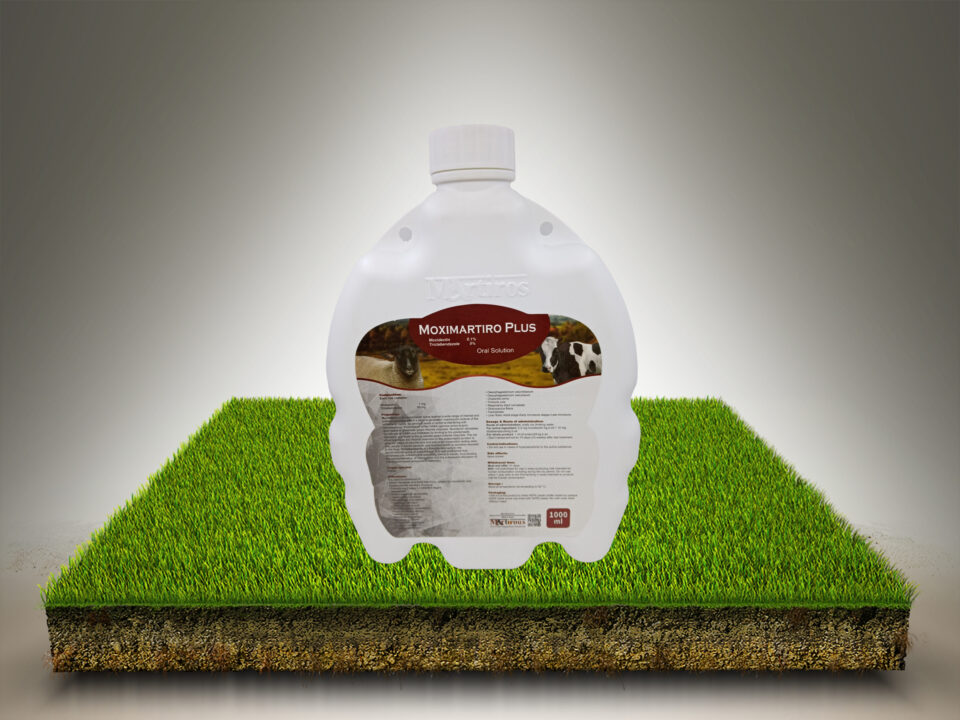
Kazodexdal

Kuranium
Oral drench (Solution)
For veterinary use only
Composition :
Each 1 ml contains:
Moxidectin 1 mg
Selenium (as Sodium Selenate) 0.5 mg
Properties:
Dectarium is a combination between moxidectin and Selenium. Moxidectin is a parasiticide active against a wide range of economically important internal and external parasites and is a second generation macrocyclic lactone of the milbemycin family. Its principal mode of action is interfering with neuromuscular transmission of the GABA (gamma amino butyric acid)-gated or glutamate-gated chloride channels. It stimulates the release of GABA and increases its binding to the postsynaptic receptors. The net effect is to open the chloride channels on the postsynaptic junction to allow the inflow of chloride ions and induce an irreversible resting state. This results in flaccid paralysis and eventual death of parasites exposed to the drug. The biochemical role of selenium is as a component of the enzyme glutathione peroxidase (GSH-PX). The exact role of GSH-PX in mammalian cells is not fully understood but it is thought to act by protecting cells from oxidizing agents which are capable of irreversibly denaturing essential cellular proteins which leads to degeneration and necrosis, resulting in muscular weakness and white muscle disease commonly associated with selenium deficiency. It is believed that a deficiency in selenium can cause a decrease in the humoral response of animals to vaccination and increase the susceptibility of animals to disease. The symptoms are most pronounced in young fast growing animals.
This combination for treatment of gastrointestinal nematodes which are resistant to benzimidazole, levamisole and morantel anthelmintic action families. It has also shown efficacy against a number of strains of Haemonchus contortus and Ostertagia spp . Provides a selenium supplement for sheep rasied in selenium deficient areas
Indications:
For treatment of
Adult and immature gastro-intestinal and lungworm nematodes:
Haemonchus contortus (including inhibited larvae)
– Ostertagia circumcincta (including inhibited larvae)
– Ostertagia trifurcata
– Trichostrongylus axei (including inhibited larvae)
– Trichostrongylus colubriformis
– Trichostrongylus vitrinus
– Nematodirus battus
– Nematodirus spathiger
– Nematodirus filicolis (adults only)
Lungworms: Dictyocaulus filarial.
Target Species:
Sheep
Dosage & route of administration:
- Shake well before useRoute: orally by oral drenchFor whole product:
1ml of product /5 kg.b.wt.
Warnings :
- The effects of GABA agonists are increased by moxidectin.
- Care should be taken to avoid the following practices because they increase the Risk of development of resistance and could ultimately result in ineffective therapy:
- Too frequent and repeated use of anthelmintics from the same class, over an Extended period of time
- Underdosing, which may be due to underestimation of body weight, misadministration of the product, or lack of calibration of the dosing device (if any).
- Suspected clinical cases of resistance to anthelmintics should be further investigated using appropriate tests (e.g. Faecal Egg Count Reduction Test). Where the results of the test(s) strongly suggest resistance to a particular anthelmintic, an anthelmintic belonging to another pharmacological class and having a different mode of action should be used.
- moxidectin resistance is very rare; it has been reported in a single case involving a levamisole-, benzimidazole and ivermectin-resistant strain of Teladorsagia circumcincta. Therefore the use of this product should be based on local (regional, farm) epidemiological information about susceptibility of parasites, local history of treatments and recommendations on how to use the product under sustainable conditions to limit further selection for resistance to antiparasitic compounds
- Moxidectin is inherently toxic to aquatic organisms including fish. The product should be used only according to the label instructions. Based on the excretion profile of moxidectin when administered as the oral formulation to sheep, treated animals should not have access to watercourses during the first 3 days after treatment
Adverse effects:
Symptoms generally do not occur at less than 5 times the recommended dose.
They are manifested as transient salivation, depression, drowsiness and ataxia 8 to 12 hours post-treatment. Treatment is not generally necessary and recovery is generally complete within 24 to 48 hours
Withdrawal Periods:
- Meat: animals producing meat or offal for human consumption must not be sold for slaughter either during treatment or within 10 days of the last treatment
- Milk : intended for sale for human consumption must be discarded during treatment and for not less than 35 days following the last treatment
Contra-indications:
- Do not use at the same time as any other selenised fertilizer ,prill or product without consulting a veterinarian
- Do not exceed stated dose volume, frequency.
- Do not overdose lambs under 10 kg.
- Should not be used where avermectin resistance is present , except where specially recommended by an adviser
Storage:
Store at a temperature not exceeding 30°C
Packaging:
Opaque white (HDPE) plastic bottle contains 20, 25, 30, 50, 100, 150,200, 250,300,400,500, 750, 1000 ml oral Solution with (HDPE) plastic cap safety by Aluminum sealed with an outer label without Insert




